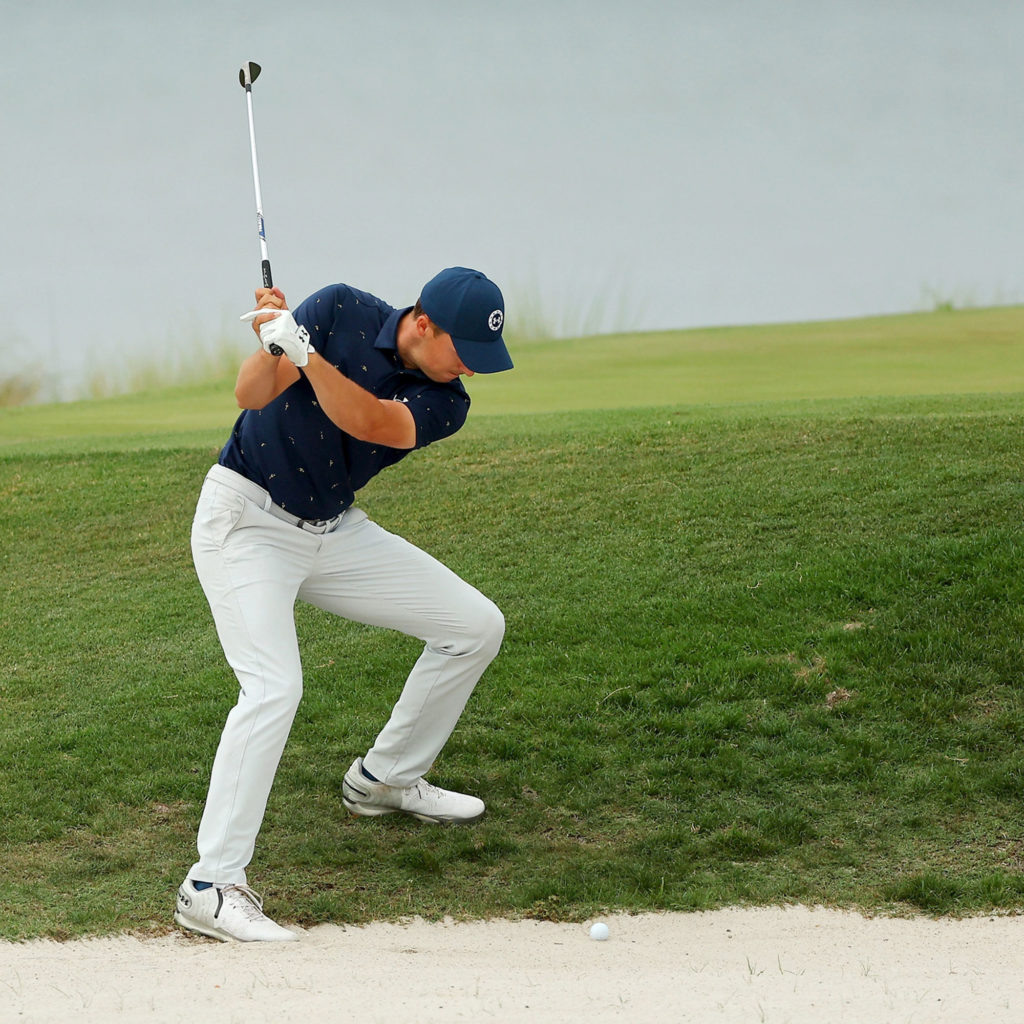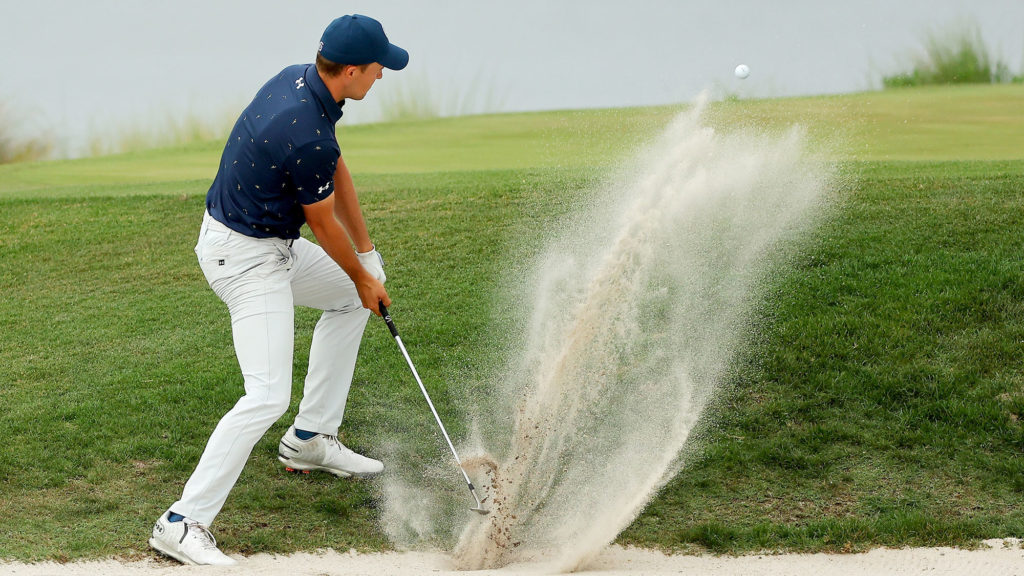Dominate the bunkers like Jordan Spieth: Deconstructing the winning shot from the RBC Heritage and how you can hit shots just like his
Jordan Spieth seems to have an affinity for clutch bunker shots.
The most famous one, of course, being that famed hole-out from the greenside bunker at the 2017 Travelers Championship to beat Daniel Berger. If you’ve watched any golf in the past five years, you have no doubt seen the incredible highlight at least once, if not hundreds of times, by now.

The 13-time PGA Tour winner added another winning bunker shot to his highlight reel in April at the RBC Heritage, where his 56-foot shot from a greenside bunker stopped seven inches away from the first playoff hole, helping him beat Patrick Cantlay for a second consecutive win on Easter Sunday. Spieth’s final-round 66 was just enough to force extra play, aided in part by a hole-out from the bunker at the par-5 second.
“I needed a lot of things to go right,” Spieth said. “I needed to birdie the 18th then needed some help, got some help, dodged a bunch of bullets coming in, and ended up in a one-on-one playoff where my lie in the bunker, although not great, was certainly better than Patrick’s.”
If the humble Spieth isn’t willing to applaud his own masterful stroke from the bunker, Todd Anderson certainly will. The director of instruction at the PGA Tour Performance Centre at TPC Sawgrass, home of the Players Championship, spares no detail about all the daunting circumstances Spieth managed to overcome at the last en route to his victory.
“The ball was really close to the lip of the bunker, which he had to stand outside, so he had two really difficult things he had to overcome in order to hit a good shot,” Anderson said. “But he took his time getting into his setup and tried to find the right stance where he could stay balanced and get the club down into the sand.”

Finding the perfect stance for a lie like Spieth’s is far from simple. When standing outside a bunker the ball is typically below your feet, which can make it difficult to get the club to reach the sand. “It’s not like you’re standing on level ground,” Anderson notes.
With no sand to bury his feet into and the ball nestled so closely to the lip of the bunker, Spieth had to find a way to lower his body enough so that he could still hit behind the ball. The three-time Major champion positioned his front foot higher than the back, allowing more flex in his left (or lead) leg than his right and in turn helping him more easily reach the sand.
“He’s playing this ball further back than he would off a normal lie,” Anderson noted. “You can see that the ball looks almost like it’s more towards his right foot, so that’s why he’s leaning over and trying to get more flex. If you lower your body it helps you hit behind the ball.”
Despite all the circumstances surrounding the shot, Spieth still managed to swing from a stable base, hinging the club up quickly on the backswing before aggressively hitting down into the stand. Though he knew he was going to run the club into the lip of the bunker, the Texan still accelerated the club into the sand and let the edge of the bunker stop his club.
“What a lot of people would do is be afraid of hitting the edge of the bunker, so they would decelerate to stop. He went ahead and drove that club down into the sand and just made sure he had enough force to get the ball out over the lip and onto the green, and then just let it release down to the hole,” Anderson says.
For most players, a 2-to-1 ratio (or 3-to-1 ratio for soft sand) in the bunker often works best. If you’re trying to hit a 30-yard bunker shot you probably need to make a 60-yard swing. In this particular instance, Spieth makes about a 60-yard swing in which he accelerates down into the sand. “That allows that blanket of sand from around and under the ball to carry the ball out, and he figures out where he wants to land it and how it’s going to roll after landing on the green,” Anderson said. “He just trusts it and lets it go.”

That “blanket of sand” is one of the first critical aspects of bunker shots beginners must keep in mind: focus on hitting the sand as opposed to the ball itself. Anderson’s advice to players is to picture the ball in the centre of an oval circle, then try to move the sand from two inches behind it. The blanket of sand is what ultimately lifts the ball out of the bunker – if the sand isn’t coming out of the bunker, the ball probably isn’t either.
“He also made sure the club face stayed open when he hit the sand so the ball would splash out,” Anderson added. “If you close the face, the club would dig and the ball wouldn’t get high enough, so he had the face open to add loft so he could use the sand to move it up and out.”
So, to recap: lower your body enough to where you can hit behind the ball. Swing from a stable base, hinge the club up quickly, accelerate down into the sand with a 2-to-1 ratio swing speed. Hit about two inches behind the ball with the clubface open, then watch your ball splash out of the bunker and release towards the hole.
Just like Jordan Spieth.
Todd Anderson is the director of instruction at the PGA Tour Performance Center at TPC Sawgrass, home of the Players Championship. The 2010 American PGA Teacher of the Year has seen his students amass more than 50 victories across the PGA Tour and Korn Ferry Tour, including two FedEx Cup titles. He is currently rated by Golf Digest as one of the top 20 golf instructors in the United States. Follow Anderson on Twitter @ToddAndersonTPC and watch Spieth every week on GOLFTV Powered by the PGA Tour.
